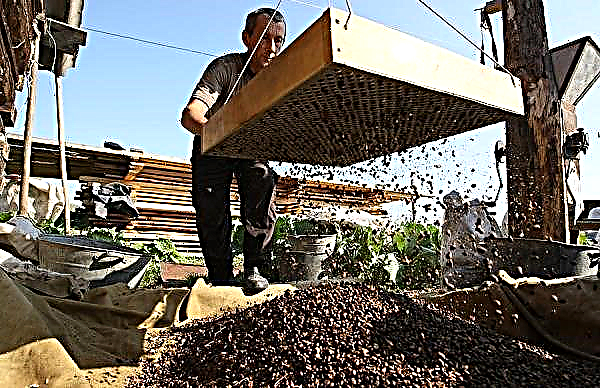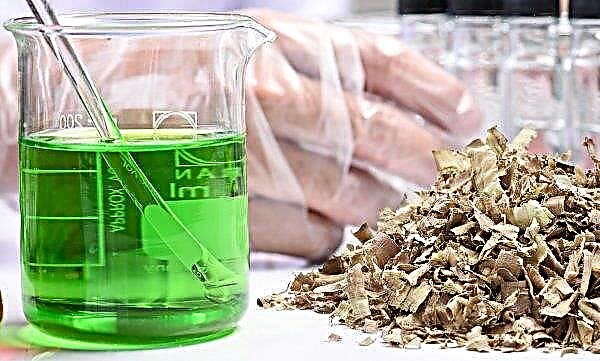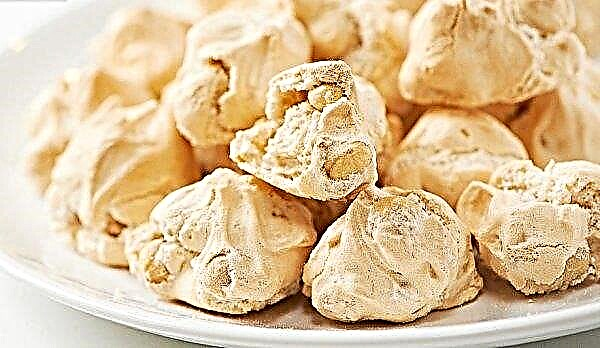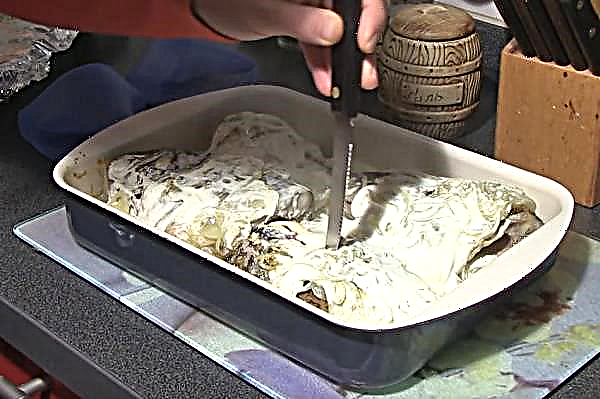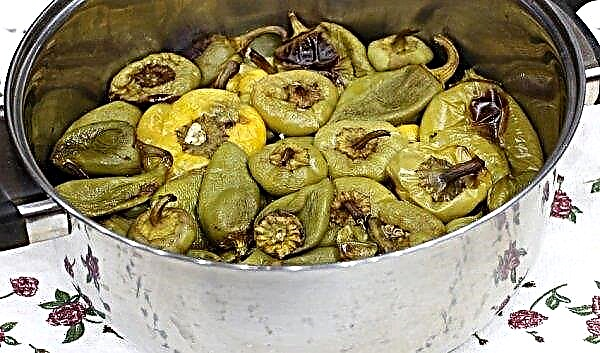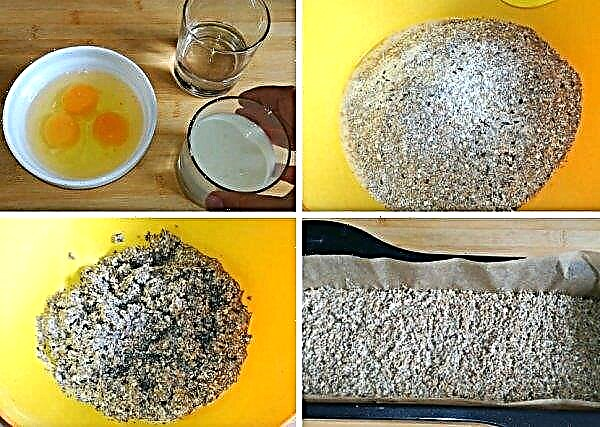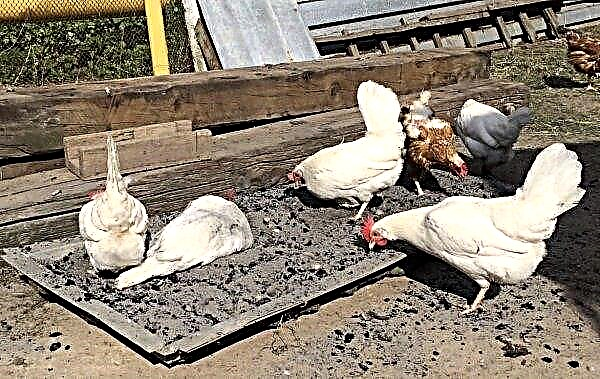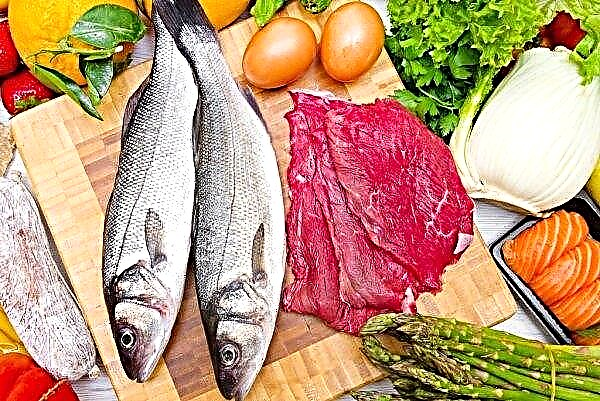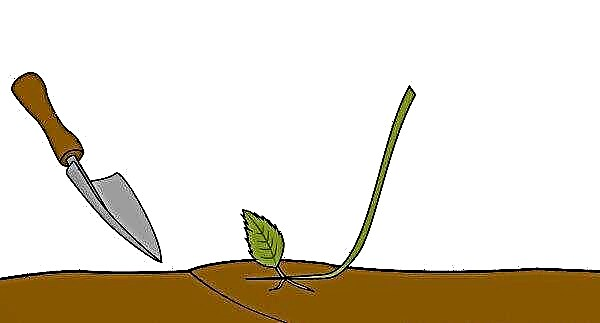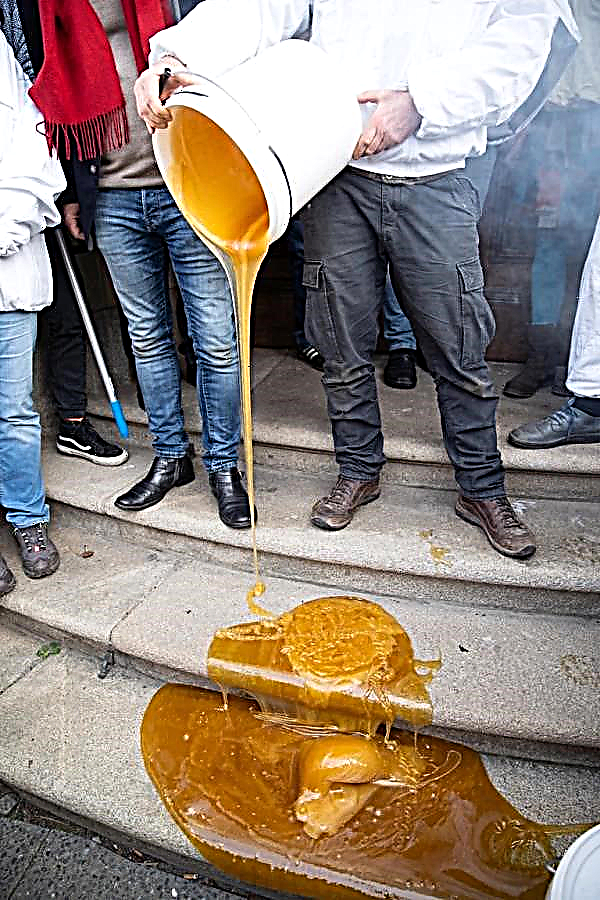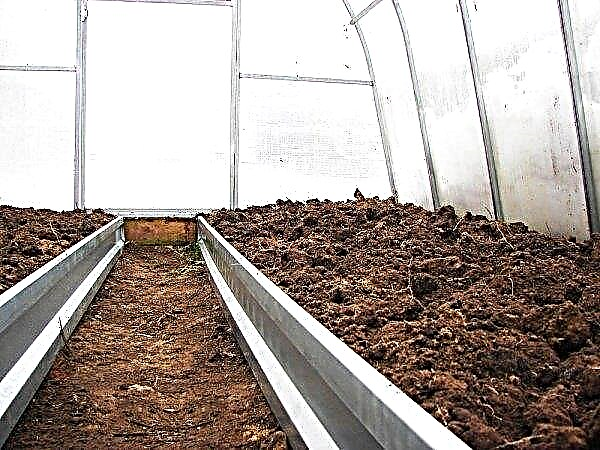If on your site the yellowed cedar begins to dry, then there may be several reasons. Firstly, you should properly care for him. Secondly, a weakened plant can be affected by diseases and pests. In order to prevent the death of the tree, it is necessary at the first sign to begin the struggle for its recovery. It should be considered in more detail, which leads to a loss of decorativeness and how to deal with it.
Why does the cedar turn yellow and dry?
Cedar grows very slowly. A five-year-old seedling has a height of 25–35 cm, and at 10 years old - up to 1.5 m. A mature plant grows faster - up to 35 cm per year. This period begins from 15–20 years. As a rule, there are no problems with adult cedar, but young seedlings need care. If it is not implemented, then the plant will lose its decorative appearance and may die. Weak trees can be affected by microorganisms and pests. This leads to yellowing and dropping needles. If no apparent causes of the problem are found, then perhaps the tree needs proper care and improvement of growth conditions. Only the correct definition of the cause can help you choose the right method of eliminating it.
Did you know? The flag and coat of arms of Lebanon depicts a tree, which is a symbol of the country. This is cedar.
It is not worth worrying if, by the fall, yellowness of needles appears on old branches. This is a normal biological process. Moreover, the young shoots remain green. But if more than half of the crown becomes yellow, then it is necessary to check whether the tree has been exposed to stem or other parasites. The main reason for yellowing needles is pests. There are other signs of their activity - these are smudges of resin on the bark and brownish flour on the trunk.

These are traces of bark beetle activity. As a result, the tree may dry out. It can be saved by intra-stem injection. Young shoots are strewn with white dots - this is hermes. The mass of caterpillars entwining green branches is a pine moth. Gray coating on young shoots - aphids. White-brown motionless tubercles in inaccessible places - scale insects. All of them lead to yellowing of needles and its fall. In such cases, the tree must be saved.
What to do if the needles turn yellow and crumble at the cedar
It is difficult to consider pests. You need to put white paper under the trunk and lightly shake off the branches. If insects begin to fall on the paper, then it is necessary to fight them. If an adult tree has turned yellow, then there may be several reasons, since pests affect plants weakened by diseases.
Important! Beans must be planted around cedars. They contribute to the growth of the tree.
At the slightest suspicion of a disease, you should immediately respond. That is, to begin treatment with fungicide by spraying or stem injection under the bark of a tree. If the tree has been exposed to pests, it should immediately be sprayed or spilled under the root of the insecticide solution.

How to care for cedar
Cedar grows well in sunny areas, but young seedlings must be shaded so that they do not turn yellow. This is a moisture-loving culture. In summer, the tree absorbs a lot of moisture, therefore, in the arid hot months, the plant needs regular watering.
Depending on the height of the trunk and rainy or sunny weather, the plant must be watered in such volumes:
- up to 10 m - 90-400 l per week;
- up to 5 m - 35–150 liters per week;
- up to 3 m - 20–80 l per week;
- up to 1 m - 5–20 l per week.
 In preparation for winter, watering must be stopped. Excessive moisture in the soil and stagnation of water can destroy the plant.
In preparation for winter, watering must be stopped. Excessive moisture in the soil and stagnation of water can destroy the plant.
In addition to watering, it is necessary to periodically weed the trunk circle. Fungal diseases can develop on weeds. They spread in a warm environment with high humidity. And under favorable conditions, they can infect a tree. Therefore, weed grass near the trunk must be regularly weeded.
Cedars love acidic soils. It is necessary to check the acidity of the soil. If the soil does not meet the requirements, once a month you should irrigate the perinar trunk with a solution of citric acid (20 g per 10 liters of water). Three months later, the tree will recover.
 For feeding healthy cedar it is necessary to use the drug "Azofoska". This is a complex mineral fertilizer. It is necessary to apply 40 g of the drug per 1 m of the trunk circle. Thanks to this drug, the plant increases resistance to disease and grows better.
For feeding healthy cedar it is necessary to use the drug "Azofoska". This is a complex mineral fertilizer. It is necessary to apply 40 g of the drug per 1 m of the trunk circle. Thanks to this drug, the plant increases resistance to disease and grows better.
You can use the Eco-1 fertilizer. It promotes active plant growth and timely development. This is achieved due to the increased content of nutrients in the preparation. Fertilizer also increases the immunity of cedar to diseases, pests and stresses after transplantation. To fertilize the tree, you need to dilute 10 g of the drug in 10 liters of water and pour under the root. This dosage must be used for plants above 1 m.
Did you know? The smell of cedar has a calming effect. It is actively used in the perfume industry.
If the plant was struck by pests, then for a start it is necessary to reduce the amount of nitrogen in the fertilizing. You can use liquid fertilizer "Activin" or "Master" for conifers. During this period, the plant needs to increase its protective properties. Therefore, it is worth watering the cedar with the Kendal or Viva preparation, or spraying with the complex of microelements Brexil Mix or Brexil Multi according to the instructions.

How to treat pests
A weakened cedar may die from insect damage. Therefore, the fight with insecticides can be carried out in two ways: spray the tree or spill the solution under the root. There is still a method of introducing therapeutic substances using intra-stem injection. It is used for adult trees. This method is more effective, since the therapeutic substance is not washed off by rain and circulates in a confined space for a long period. But it is performed by specialists. If spraying is necessary to carry out from 3 to 6 times a season, watering - once every 2 months, then the injection is done once a year.
Hermes
A small insect, which is a species of aphid, silts on pine plants and feeds on their sap. It is difficult to see it, but signs of presence are noticeable: white dots on young branches and needles. These are larvae of hermes, although adults are brown. In winter, insects are in the larval stage, suck out the juice from the tree and as a result of the needle it turns yellow and can fall. To destroy the pest, it is necessary to remove branches with white coating, 1-2 times a month to spray the tree with a solution of insecticide.

Any one will do: Ankara, Fufanon, Actellik. If the defeat of hermes is not strong, then the tree itself can cope with the insect. A young cedar with a large population of larvae needs help. Actara is a highly effective insect repellent with a wide spectrum of activity. To do this, dilute 3 g of the drug in 10 liters of water and pour the tree in the tree-trunk circle. "Actellik" - a powerful insecticide for various pests. It is necessary to dilute 10 ml of the drug in 10 l of water and spray the plant in calm weather. As a result of processing, instant pest death occurs.
Important! When spraying plants, personal protective equipment must be used: jumpsuit, respirator, rubber gloves and glasses. The duration of work should not exceed 3 hours.
Aphid
A small hairy insect of a gray color with an oblong-shaped body prefers to settle on a new shoot and eat plant juice. You can fight the pest by spraying the tree several times with a solution of malathion. The working solution is prepared in such a concentration: 90 g of the drug is dissolved in 10 l of water.

You can also use "Fufanon" - a universal multi-purpose tool that protects plants from many insects. It is necessary to dilute 10 ml of the drug in 10 l of water and spray it in the morning or in the evening so that there are no bees. It is necessary to spray so as to moisten all the needles, but not to allow runoff to the soil.
Shield
Less commonly, a scale shield may appear on the cedar. Whitish-brown insects settle at the base of the needles on young branches. Usually a pest is noticed when the needles begin to crumble. Disposal of insects is complicated by the fact that they are attached in hard-to-reach places, motionless and protected from external influences by a wax shield.
Therefore, it is better to use soil preparations for the fight. As a result, the plant becomes toxic to the pest for about 2 months. Among such insecticides are “Antichrush” (10 ml / 10 l of water) and “Aktara” (3-5 g / 10 l of water). The amount of solution must be calculated: 10 l per 1 linear meter of the barrel.
 Foliar spraying can be used, but it is less effective. Actellic is a powerful systemic insecticide suitable for this purpose. 10 ml of the drug is dissolved in 10 l of water and all parts of the plant are thoroughly sprayed in calm weather.
Foliar spraying can be used, but it is less effective. Actellic is a powerful systemic insecticide suitable for this purpose. 10 ml of the drug is dissolved in 10 l of water and all parts of the plant are thoroughly sprayed in calm weather.
Moth
Pine moth, a butterfly that prefers to lay eggs on a cedar. Their flight lasts from late May to late July. The female carries out laying on the old needles. The larval development period is about 20 days. In August, flocks of caterpillars settle on young shoots. They eat everything: kidneys, old and young needles. A small cedar from such an invasion may die. For the fight, it is better to use the decis contact-action insecticide Decis Pro. It is necessary to dilute 2 g of the drug in 10 l of water and spray the tree with an even layer. The advantage of this drug is that it has a high degree of exposure several hours after treatment.

Disease pruning
Conifers are pruned during the active growth of shoots. Therefore, if pests or diseases have settled on small branches of the tree, they must be removed and burned. If the lesion is large, then it is necessary to resort to the help of chemicals.
Did you know? Cedar pine seeds are used for food. The seeds of this cedar are inedible.
Disease and Pest Prevention
In order to prevent damage to the cedar by diseases and pests, it is necessary to treat the tree with fungicide and insecticide as a preventive measure, cut and destroy the affected shoots and apply immunostimulants and micronutrient fertilizers.
In order to prevent the spring, wood processing is carried out. From pests, cedar is treated with karbofos, from diseases - with a fungicidal preparation - Bordeaux mixture. There are plants that are recommended to be planted near the cedar. They repel pests and prevent the development of diseases. Among them are mint, walnuts, marigolds, lavender, sage.

If the cedar begins to turn yellow and shed needles, then you should examine the plant in detail and study the symptoms. The main reasons that may lead to this are discussed above. Next, you need to choose the right pest control method or correct the errors of plant care. And the tree will thank you on a hot day with a shadow from a mighty crown and clean fragrant air.

